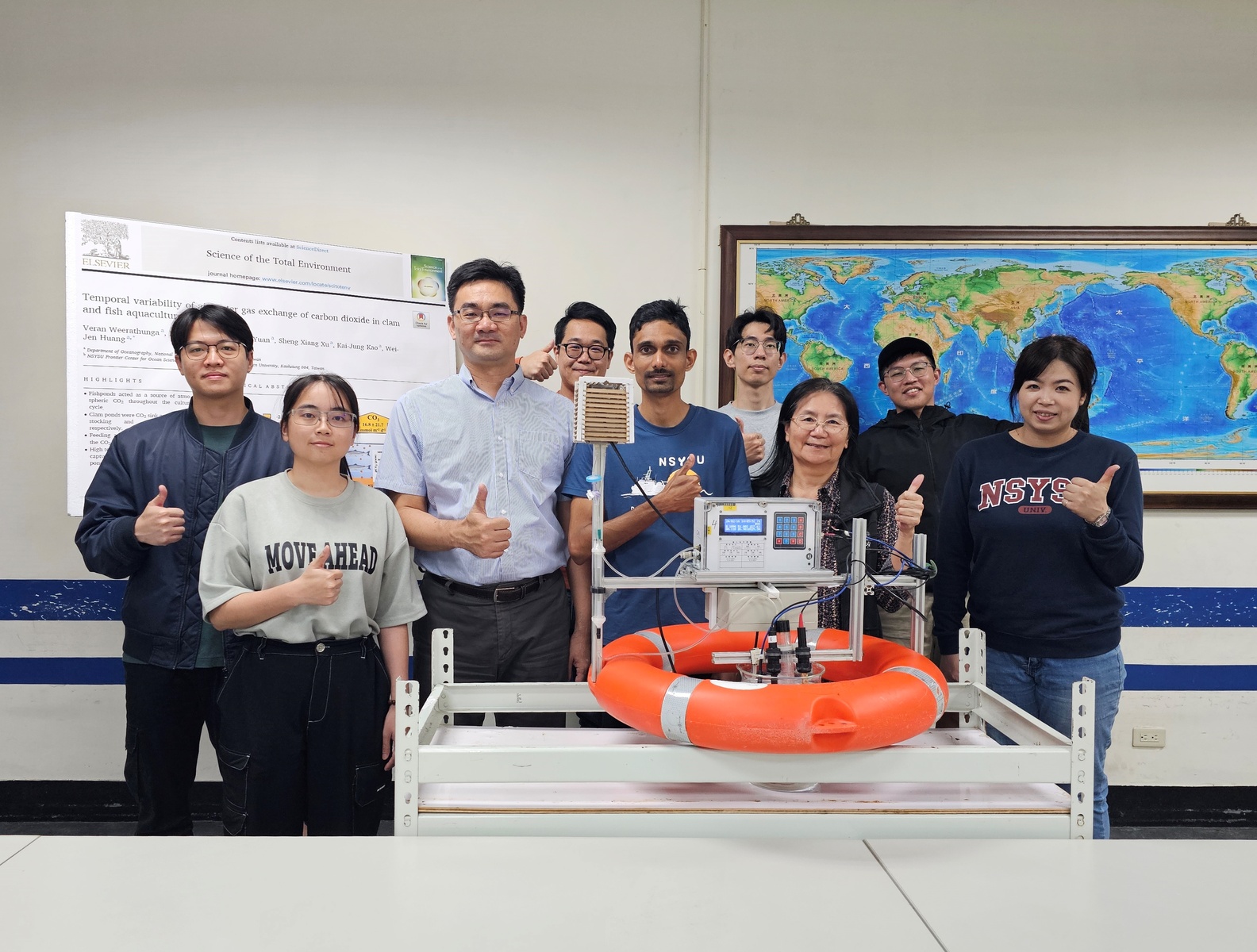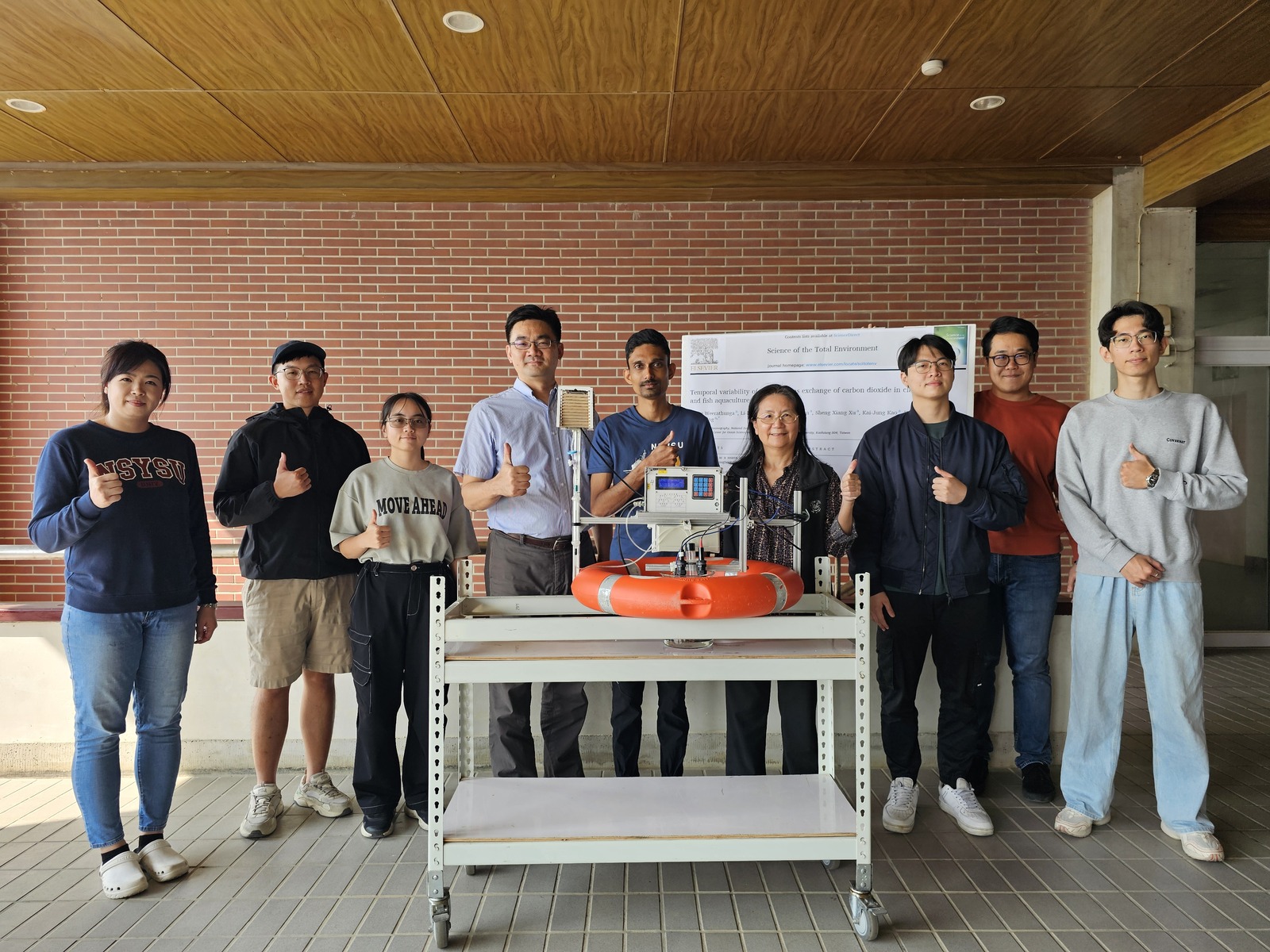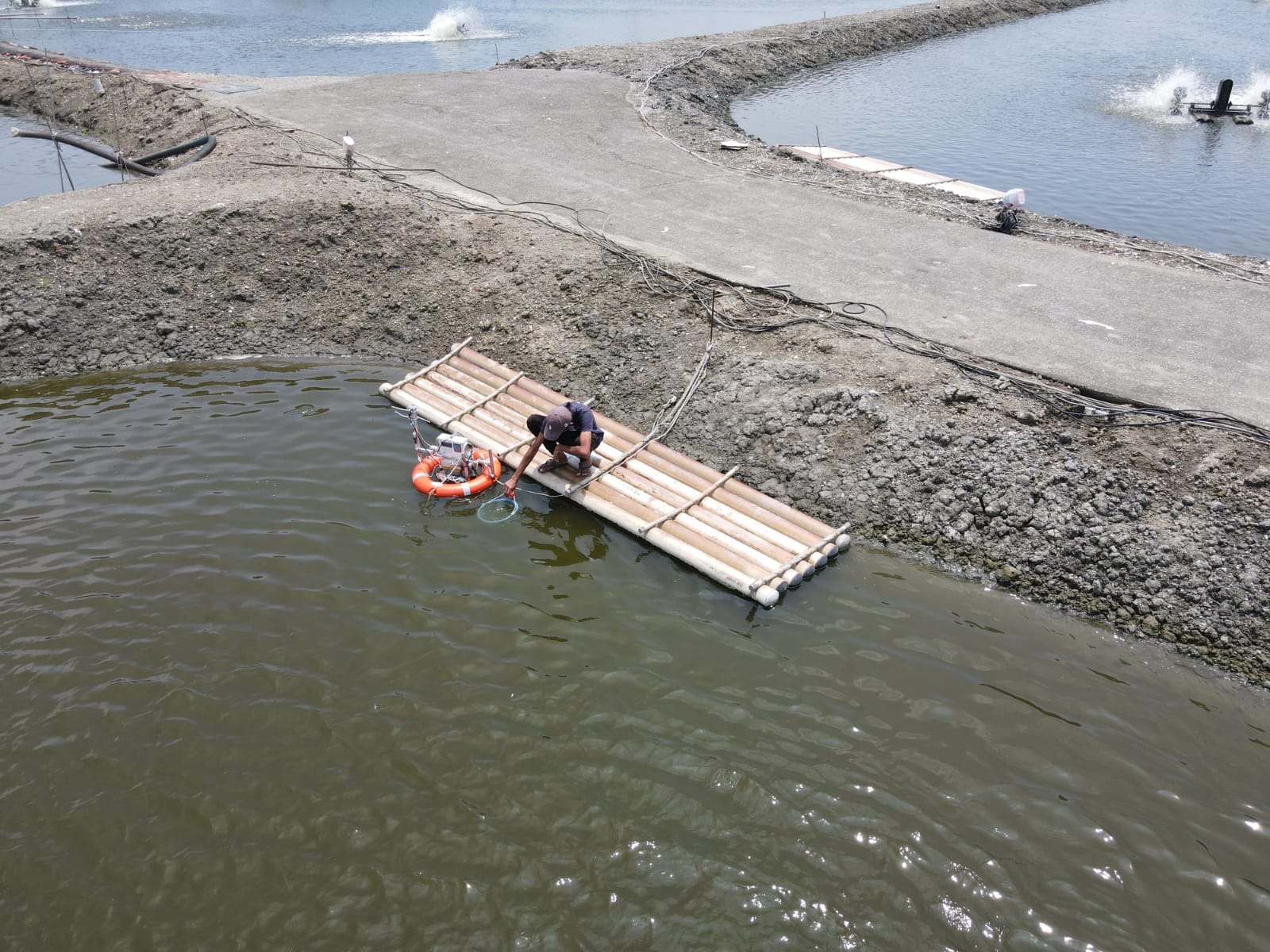Do aquaculture ponds absorb or emit carbon? NSYSU developed Taiwan’s first original carbon emission measuring instrument



2024-05-24
Do fish and clam aquaculture ponds absorb or emit carbon? The team of Associate Professor Wei-Jen Huang of the Department of Oceanography at National Sun Yat-sen University (NSYSU) independently developed the only carbon emission measuring instrument in Taiwan. They collaborated with Professor Li-Lian Liu’s team to conduct at-site measurements of the carbon dioxide emissions of fish and clam aquaculture ponds in three places in Southwest Taiwan. They found differences in carbon dioxide emission in stocking, middle, and harvesting stages and during daytime and nighttime. This innovative measurement technology collects empirical data and can measure carbon dioxide emissions in inland water environments such as fish ponds, lagoons, rivers, and reservoirs. It has a wide range of applications. The research results have been published in the internationally renowned journal “Science of The Total Environment.”
A team from the Department of Oceanography at NSYSU independently developed a measuring instrument to record the carbon absorption or emission variations in Taiwan’s fish ponds and clam ponds completely throughout the culture cycle for the first time. It can also provide real-time monitoring data, hoping to use scientific evidence to help fishermen committed to scientific and technological aquaculture take both livelihood and ecology into account and serve as a reference for the government when formulating carbon emission policies. The team found that fish ponds emit carbon dioxide during the entire culture cycle. In contrast, clam ponds absorb carbon dioxide during the stocking stage and transition to carbon emissions during the middle to harvesting stages. Overall, low-stocking density clam ponds still absorb carbon dioxide as a weak carbon sink.
Wei-Jen Huang deduced that this was because no additional feed was added to the clam ponds. Clams primarily feed on phytoplankton like algae, and the efficiency of algae in absorbing carbon dioxide is greater than the change in carbon dioxide produced in the water when clams’ calcify to build shells. However, suppose external feed is added to the clam pond in an artificially controlled manner. In that case, carbon dioxide may be produced due to the decay and biological decomposition of the remaining feed, causing the water to emit carbon dioxide. However, the calculation of the carbon emissions produced by each species’ life cycle, culture methods, and the entire ecosystem is very complex, and the details are still being resolved.
Wei-Jen Huang further pointed out that in addition to the characteristics of the aquaculture species and the environment that will affect the amount of carbon emissions, the water temperature, wind speed, daytime and nighttime will also exhibit variations. The measurement results showed that carbon emission was stronger during daytime coinciding with higher wind speeds compared to nighttime in fish ponds. Based on this, more complete culture methods and carbon reduction strategies can be developed. “Other measurements in the past only sampled during the day due to safety considerations, so the accuracy and completeness were low and could not reflect the carbon emissions of the entire culture cycle.” Wei-Jen Huang emphasized that the systematicness and continuity of sampling are very important; the original measuring instrument developed by the team with an air-water gas balancer uses probes and pipelines to measure the exchange of water and gas in a closed circulation pipeline. It records the gas concentration after air and water balance every 10 minutes and observes continuously for more than 24 hours. Achieving the same pressure difference between the inside and outside under a continuous cycle condition is difficult and requires professional skills.
The research team also includes Sri Lankan doctoral student Veran Weerathunga, doctoral students Fei-Ling Yuan, Sheng Xiang Xu, and alumnus Dr. Kai-Jung Kao. “Science of The Total Environment” is an internationally renowned academic journal with an academic journal impact of 9.8 in 2022. Journal link: https://doi.org/10.1016/j.scitotenv.2024.170090
